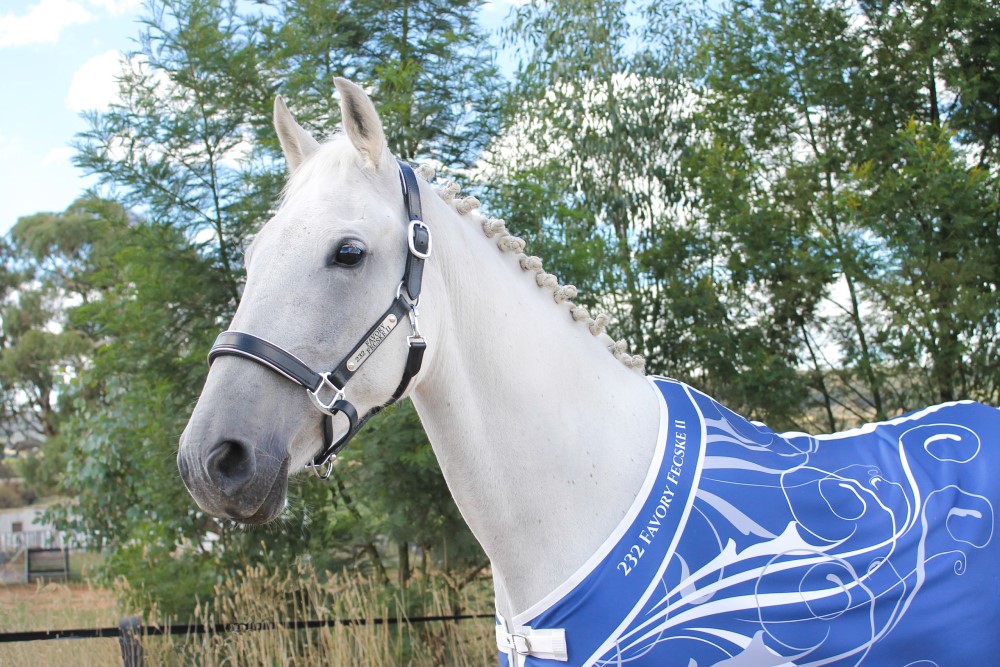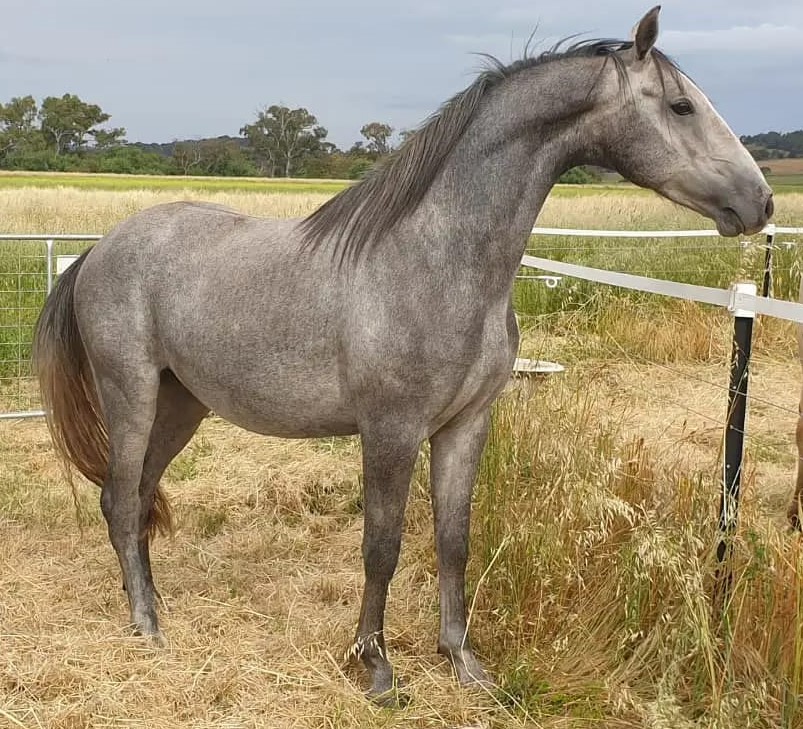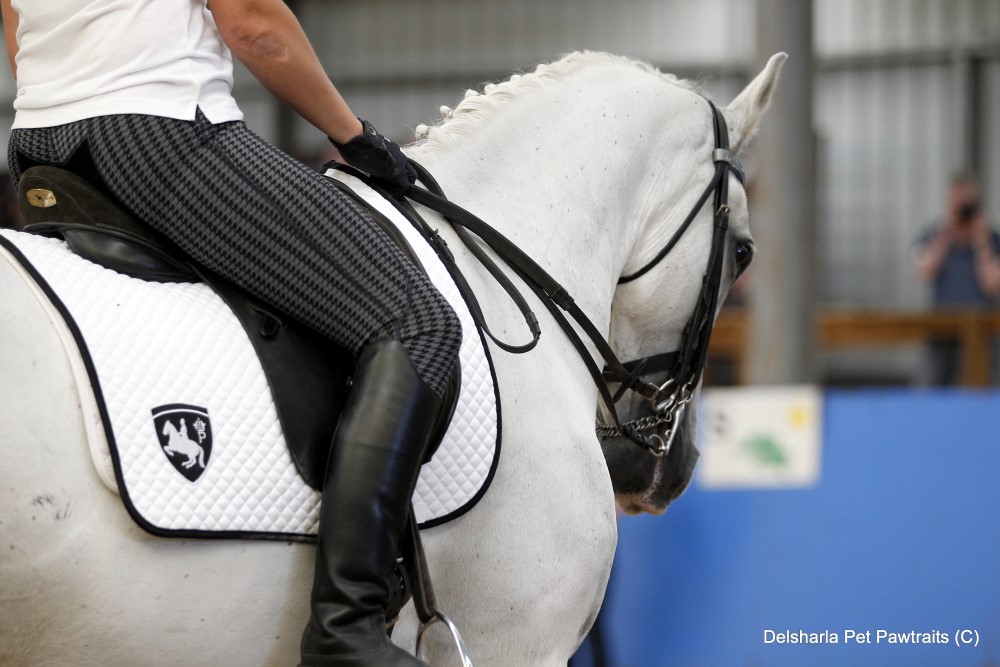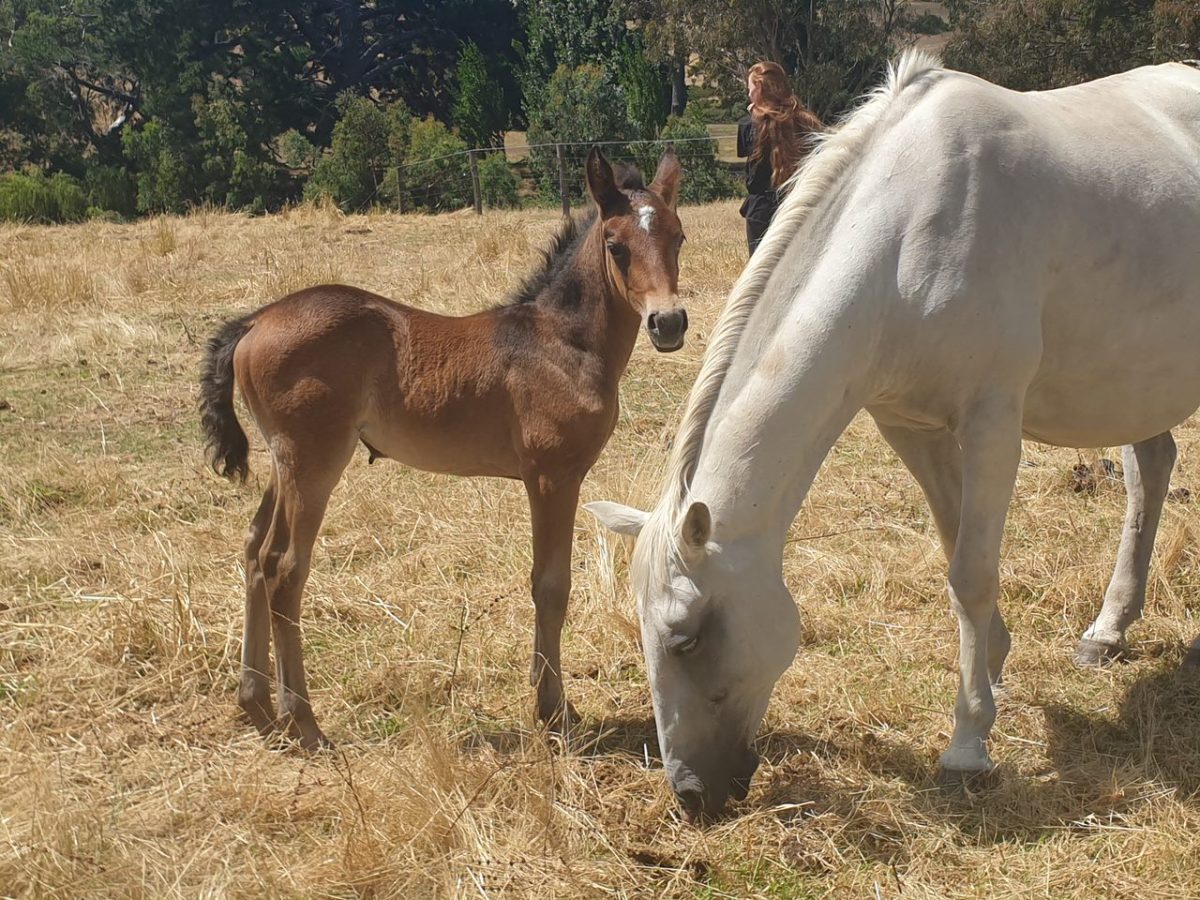The Lipizzaner is one of the oldest horse breeds in Europe, dating back to 1580 when the Lipica Stud Farm was established under Archduke Charles II of Austria through the importation of Spanish blood1.
Known for their captivating performances of the haute école in the halls of the Spanish Riding School, the Lipizzaner has remained a relatively rare breed with a current estimated global population of 14,000 horses. First imported into Australia in 1975, the Lipizzaner has not seen the popularity experienced by other baroque breeds and numbers less than 130 individuals. The Lipizzaner remains threatened with a small number of breeders working tirelessly to preserve the breed in Australia.

Dr Jaromir Oulehla, a veterinarian and former director of the Spanish Riding School and Federal Stud Farm Piber in Austria, flagged the decline of Lipizzaner breeding in his 1996 publication and queried how best to maintain the Lipizzaner in its current form in the face of a shrinking gene pool and economic pressures2.
Every classically bred Lipizzaner horse on earth today can be traced back to one of the six foundation stallions – Conversano, Favory, Maestoso, Neapolitano, Pluto, Siglavy – and a recognised mare family, traceable in an unbroken line back through the generations. Our Australian Lipizzaners can be traced back up to 35 generations, with many of our horses having a grandparent or great-grandparent from Slovenia, Hungary or Austria.
Like many other breeds, to maintain character, type and purity of line, the Lipizzaner horse must conform to a breeding standard. The original breeding standard for the Lipizzaner was devised 400 years ago with the objective of producing horses that fit the requirements of the Imperial Court of Vienna and the Spanish Riding School. This standard required Lipizzaners to be suitable for the rigours of the haute école and elegant carriage horses for royalty – quite the challenge when you consider the different conformational requirements for these two roles3.
Different stud farms value different traits in their horses and, because of this, deviations from the original standard are not uncommon. These differences have manifested as versatility within the breed – Szilvásvárad produces world-class driving horses; Piber produces horses against the original breeding standard, and Lipica walks a fine line producing classically bred horses that are able to compete in modern dressage and school the haute école movements4.
So where does this leave Australian Lipizzaner breeding? What is our objective when we produce a Lipizzaner? Are we choosing to preserve mare and stallion lines above all else, or are we choosing to chase the dream of the graceful, white dancing horse?
At the time Dr Oulehla published his findings into breeding standards, Piber preferred to lose a mare family than perpetuate a trait Piber saw as incongruous with the breed standard5.
Australia has a different view – in Australia, every Lipizzaner counts.
GENETIC BOTTLENECK
Ten years ago, Australia found itself deep in a genetic bottleneck, a situation that had been creeping up on the population since the early 2000s. It was a perfect storm created through the application of extremely strict breeding accreditation criteria, and the overuse of one bloodline. The breed reached crisis point in 2012 when there was one accredited stallion and nine accredited mares registered with the Lipizzaner Association of Australasia (LAA). Three of the nine accredited mares were the daughters of the accredited stallion. Of all the horses registered with the LAA at the time, 40% were by a single stallion, 20% by a second stallion and 10% by a third stallion. Complete implosion of the breed was stayed with the importation of a new stallion in 2014, however, this was a band-aid fix to what was an increasingly impossible problem to solve.

“This cooperative approach
has resulted in 58
foals since 2013.”
In a last-ditch attempt to preserve the breed, several breeders broke away and formed a second association, the Australian Lipizzaner Registry (ALR). The question now being asked wasn’t “how are we going to conform with the breed standard?”, it was “How are we going to ensure the breed continues in Australia?”
Lipizzaner horses are a European heritage breed, and so the European Union legislates the requirements for a Lipizzaner to be entered into the studbook. The Studbook on the Origin of the Lipizzaner Breed is the minimum standard a Lipizzaner must meet to be entered into the book and this is where the ALR found a solution to Australia’s Lipizzaner crisis: “Every purebred Lipizzaner must be registered in the studbook”6.
Provided there is a five-generation traceable pedigree, it is every Lipizzaner’s birthright to be entered into the studbook, and there is no mandated requirement for an accreditation process to determine breed stock. So, the ALR threw out the rulebook as it was previously understood and carried out an audit of the entire Australian Lipizzaner population. This audit resulted in a forward breeding plan utilising horses available to the ALR, based on genetic diversity, known genetic issues, and conformation traits.

Dr Oulehla thought it advantageous in small gene pools to exchange breeding stock from different regions with similar or shared breeding standards7. Whilst importing large numbers of Lipizzaners into the country simply isn’t a practical solution due to our immense distance from Europe, Australia has implemented this advice in a different way. Over the past 10 years, breeders have formed a cooperative where horses are shipped thousands of kilometres between Queensland, New South Wales, South Australia, and New Zealand to be paired with their most suitable counterparts. Up until very recently the cooperative movement was focused on increasing numbers without compromising quality – a very tricky endeavour. However, with an expanding population, focus has started to shift towards the introduction of colour genes to assist in reducing the prevalence of melanoma.
This cooperative approach has resulted in 58 foals since 2013 and dramatically increased stallion line and mare family representation.
WORLD-FIRST INITIATIVE
It was off the back of this cooperative movement that LipiData (www.LipiData.org) was born. Lacking support from the international community who didn’t understand the unique challenges faced by Australian Lipizzaner breeders, the Australian-developed global website opened the door for breeders to create forward breeding plans and understand inbreeding coefficients (COI). As Australia is working with particularly restricted genetics, allowing breeders to understand the genetics in their own herd gives them the ability to make informed decisions in line with their breeding objectives.
So, is Australia choosing to preserve mare and stallion lines above all else, or are we choosing to chase the dream of the graceful, white dancing horse? The answer is both, and a little more.

Australia is showing the world there is a different way to manage their small populations. The implementation of a collaborative, dual-country breeding operation, with the preservation of the Lipizzaner at the forefront, has created a tight-knit community that shares ideas, breeding stock and resources. Alongside the development of this cooperative was the development of LipiData. Now containing over 11,000 pedigrees, including every single Australian Lipizzaner, LipiData strongly believes that information pertaining to the preservation of the Lipizzaner should be freely accessible to all, regardless of affiliations. LipiData was built for Australian Lipizzaner breeders, but is now helping support Lipizzaner breeders worldwide.
Through smart breeding decisions, and with the implementation of LipiData to track pedigrees and manage association affairs, the Australian population has grown in numbers, diversity and quality with each generation being better than the last. The recent importation of some very select frozen semen has also contributed greatly to the breed’s security. And, as a bonus, Phoenix Park Lipizzaners in South Australia produced the first coloured Lipizzaner seen in Australia in over 30 years from Slovenian frozen semen. Progress at last.
The lesson learned from the Australian Lipizzaner experience is that collaborative grassroots action is the most important piece of the puzzle. It’s the individual small-time breeders who are dedicating their lives to these horses, getting up early to feed, staying up late with a colicky horse, mourning the loss of their broodmare, spending years and their savings importing frozen semen from an elusive classically bred black stallion. It’s these people who are securing the future of the Lipizzaner horse in Australia, and it’s these people that LipiData is working to support. EQ
Footnotes: 1. ‘History of the Lipizzans’, Lipica State Stud Farm (Web Page) <https://www.lipicanec.si/en/kobilarna-lipica/lipicanci-en/history-of-lipizzans.html> 2. Dr Jaromir Oulehla, Breeding Standards in the Lipizzan Horse Population (Richard J. Inzerillo, 1st ed, 1996) 1. 3. (n2) 66. 4. (n2) 16-17. 5. (n2) 97. 6. The Federal Stud Farm Piber, The Studbook on the Origin of the Lipizzaner Breed, 3. 7. (n2) 96.
YOU MIGHT ALSO LIKE TO READ:
Australia shows the way with Lipizzaners – Equestrian Life, October 2022

